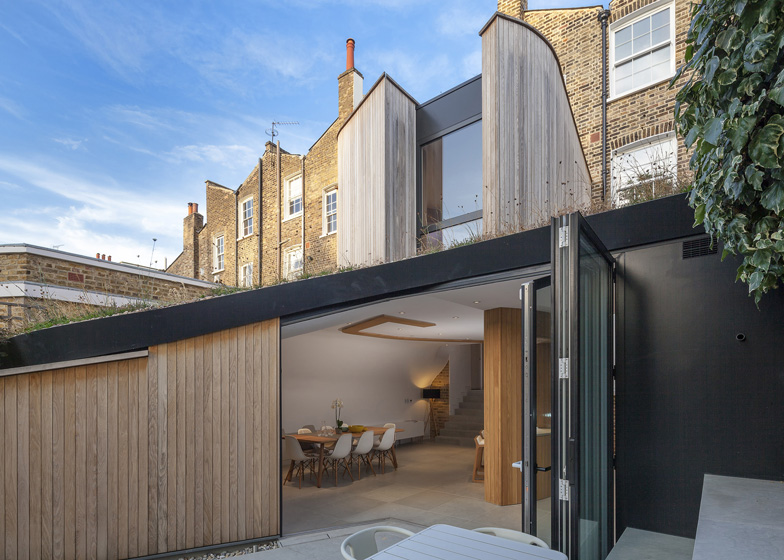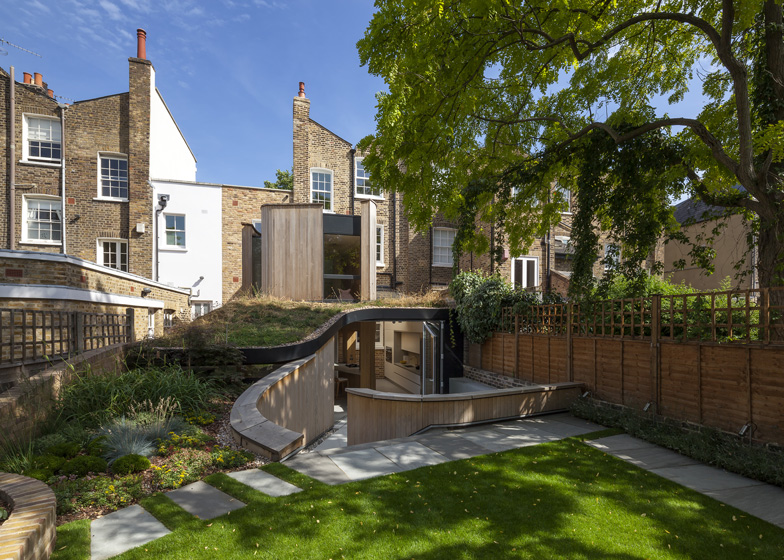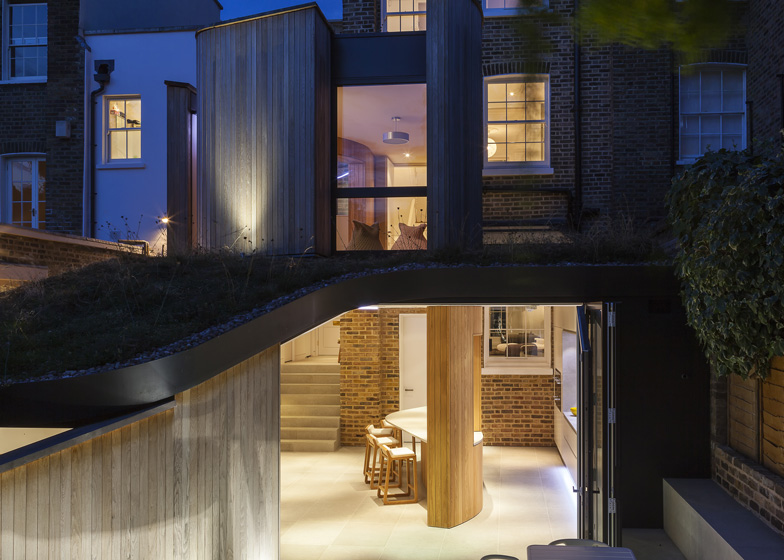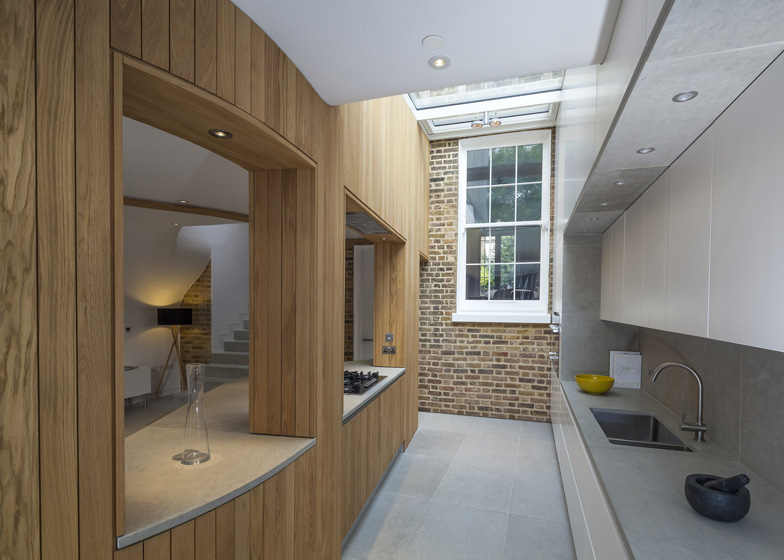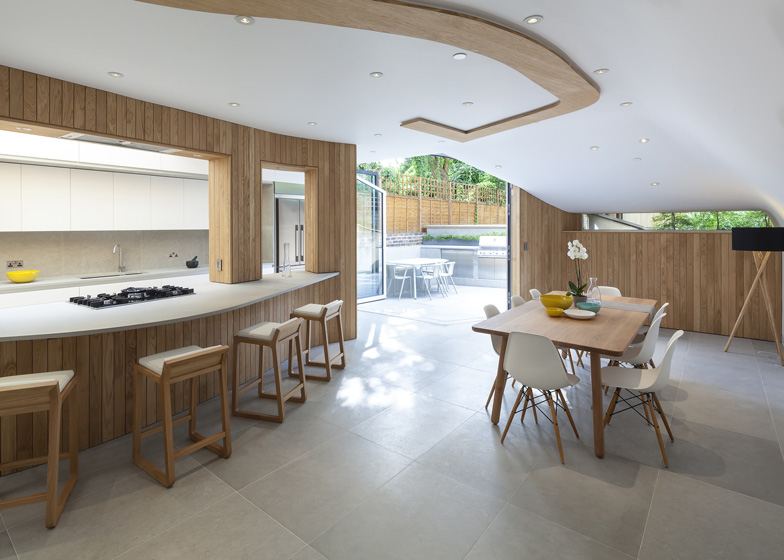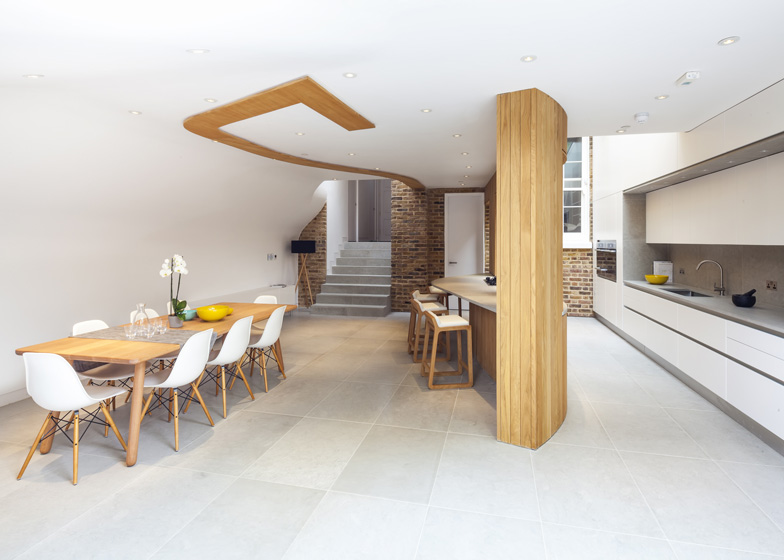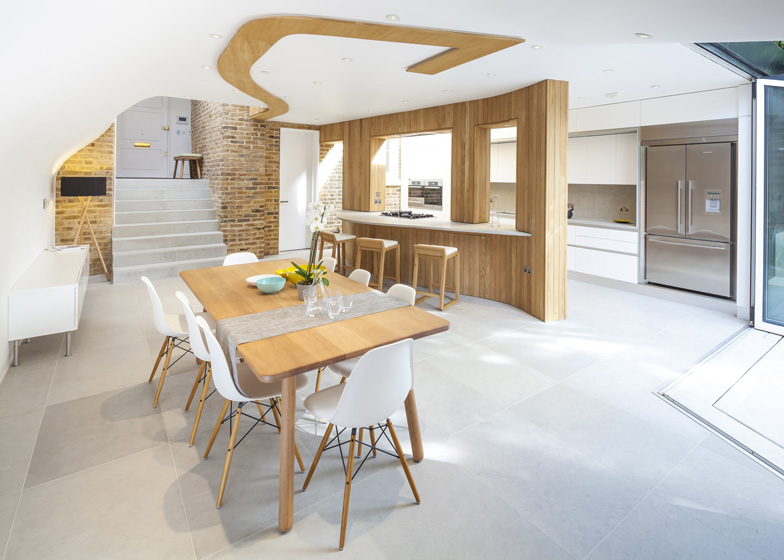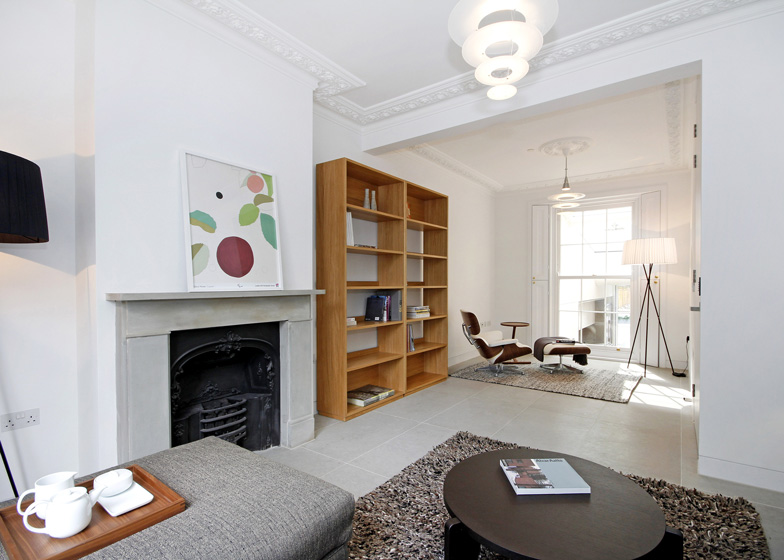London studio Scott Architects has added a curvy timber extension to a terraced house in Hackney, featuring a bowed wall that cuts through the centre of a green roof (+ slideshow).
De Beauvoir House is a nineteenth-century brick building that was originally the home of Scott Architects' directors Jez and Tonja Scott. The architects decided to renovate the house and add a larger kitchen and dining room, and an extra bedroom.
The residence is located within a conservation area, so the architects designed an extension with smooth oak surfaces and plant-covered rooftops to allow it to sit comfortably with its surroundings.
"The forms at the back of the building were designed to connect with the garden as much as possible," Jez Scott told Dezeen.
The new ground-floor kitchen and dining room curves out around a decked terrace. Its sloping roof angles down to meet the garden and is blanketed by a surface of plants and wildflowers.
Inside, the kitchen is positioned beneath a long skylight, revealing how an internal partition is also an exterior wall.
"When you're in the kitchen you can look up at the double-height timber and get a real feel for these gestural shapes," said Scott.
Limestone was used as a flooring material, contrasting with the restored pine floorboards elsewhere in the house, and a stretch of glazing defines the junction between the new and old structures.
An added doorway leads through to the new bedroom from the house's main staircase. The room also opens out to the rooftop garden.
Existing walls were stripped back to the brickwork in various rooms. The architects also reinstated decorative ceiling mouldings and added a new fireplace.
Photography is by Craig Sheppard.
Here's a project description from Scott Architects:
De Beauvoir House
De Beauvoir House is a four-bedroom Victorian terraced house that has been sensitively refurbished and boldly extended as a sculptural form that draws in light from the sky and embraces views of its garden and surrounding trees.
Set within a Hackney conservation area, original period features have been reinstated using traditional methods while a rear extension of sweeping spaces gives new life to a house that was slowly being outgrown by its family’s modern requirements.
The form of the new extension has evolved from the language of the site: its gardens, its brickwork and its neighbouring buildings. Its curved forms are clad in solid oak boarding to add to a carefully selected palette of natural materials - limestone flooring, exposed brickwork walls and restored Baltic pine floorboards.
The interiors are expressed as a series of fluid surfaces and flowing spaces that weave through the home, leading one towards a rear garden that gently extends over the dining room as a green roof of wildflowers.
Generously lit indoor family rooms open up and connect with west-facing outdoor spaces. Contemporary forms reveal and celebrate the character of the original house, allowing vertical pools of natural light to wash over exposed brickwork and cleanly composed surfaces. Oak boarding extends through to internal spaces to add texture and visual warmth.
The original building has been fully thermally insulated and includes low energy lighting, under floor heating from a highly efficient boiler and a sloping green roof.

